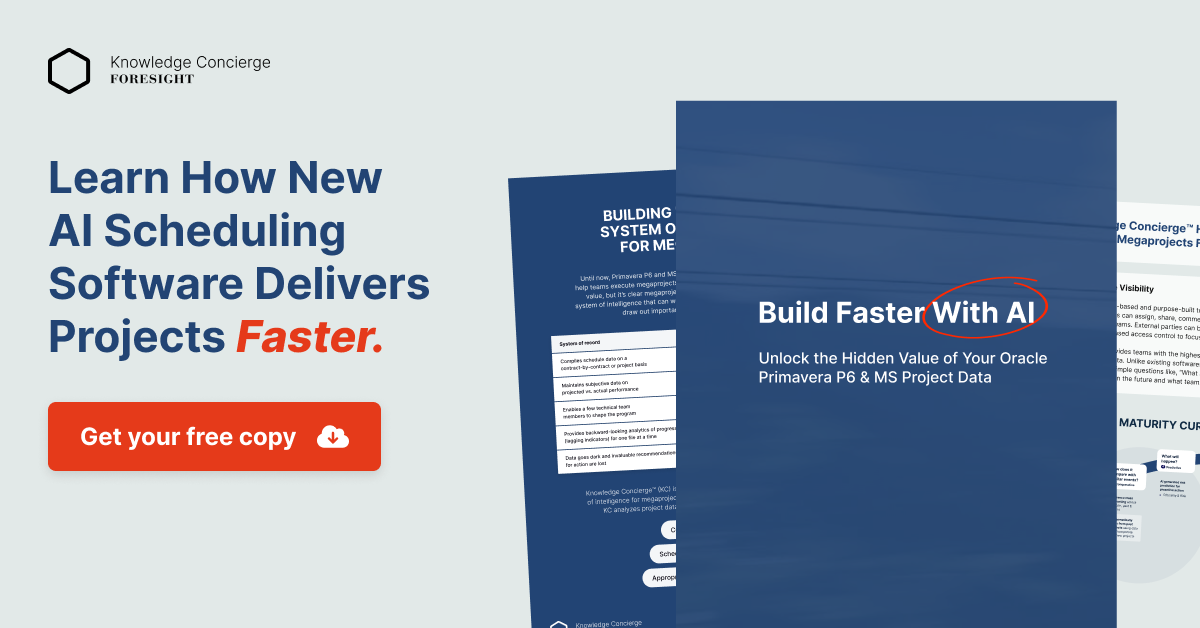How can project teams build datacenters faster?
Since the pandemic, cloud adoption has accelerated at an unprecedented rate. But even before the pandemic, the growing use of social media platforms and the resulting need for social and mobile analytics created new demand for datacenters to store and manage this information.
Over the next several years, global demand for datacenters is projected to rise significantly, reaching $343.6 billion in 2030. As data analysis has become central to business growth, more enterprises are allocating resources to build well-equipped centers to better manage their data.
To keep up, companies will need to build datacenters faster than ever before. There are two strategic approaches that project teams can use to build datacenters faster:
- Prevent delays: Teams taking this approach should prioritize cutting off tail risk, or events that cause projects to stall for long periods.
- Find opportunities to compress the schedule: this must only be attempted once schedule risks have been adequately neutralised.
Strategies to prevent delays in the building of a datacenter
Effective planning, contingency planning, and close monitoring are key strategies for preventing delays when building a datacenter. By using these strategies, companies can reduce the risk of delays and keep the project on track.
Identify and address potential bottlenecks early: One of the biggest causes of delays in building a datacenter is bottlenecks, where one step in the process cannot proceed until another step is completed. To prevent these bottlenecks, it is important to identify and address them early in the planning process. For example, if equipment procurement is expected to be a bottleneck, the project team can work closely with vendors to ensure that equipment is available when needed.
Plan for contingencies: Another effective strategy is to plan for contingencies, such as unexpected delays or changes in regulations. By anticipating potential problems and developing contingency plans, the project team can quickly adapt to changes and keep the project on track. For example, if a permit is delayed, the team can submit an alternate proposal or take other steps to mitigate the delay.
Another great way to plan for contingencies is to systematically analyze and learn from your past projects. This approach is known as reference class forecasting in University of Oxford research. Recent advances in AI technology have enabled teams to analyze past projects' schedule data (e.g., from Primavera P6 or MS-Project) with scale and speed.
Monitor progress closely and adjust as needed: Finally, it is important to closely monitor the progress of the project and make adjustments as needed. This can involve regularly reviewing the project plan, comparing actual progress to the plan, and identifying areas where additional resources or adjustments are needed to keep the project on track. By monitoring progress closely and making adjustments as needed, the project team can identify and address potential delays before they become major problems.
Strategies to speed up the building of datacenters
Once a project team has marshaled risks that can cause delay, the next step is to speed up the construction of a datacenter. Some of the most effective strategies to speed up a program include the following:
Streamline the design and planning process: One of the most significant factors that can impact the construction timeline is the design and planning process. By streamlining this process and reducing the number of iterations and changes, the project team can avoid delays and move more quickly to the construction phase. Here again, you can learn from your past projects's schedule data.
Prioritize the procurement of equipment and materials: Another key factor that can impact the construction timeline is the procurement of equipment and materials. By prioritizing the procurement of key items, such as power or cooling systems and assembly equipment, the project team can ensure that these items are available when needed and avoid delays in the construction process. In general, having clarity about what tasks are important and urgent, and require management attention speeds up progress toward completion.
Use modular or prefabricated construction methods: Another effective strategy for speeding up construction is to use modular or prefabricated construction methods. These methods involve building components offsite and then transporting them to the construction site for assembly, which can reduce the time and labor required onsite.
Use multiple shifts and overtime: Finally, the project team can use multiple shifts and overtime to speed up construction. By working additional hours and increasing the number of workers on the project, the team can complete the construction more quickly.
Build your datacenter faster with Foresight.
Building datacenters faster starts with reducing the risk of delays. Foresight helps project teams avoid delays by uncovering hidden schedule risks with predictive analytics and reference class forecasting. Then, Foresight helps teams accelerate delivery by highlighting opportunities for schedule compression and efficiency. Schedule a demo today to see how Foresight can help you build datacenters faster.



